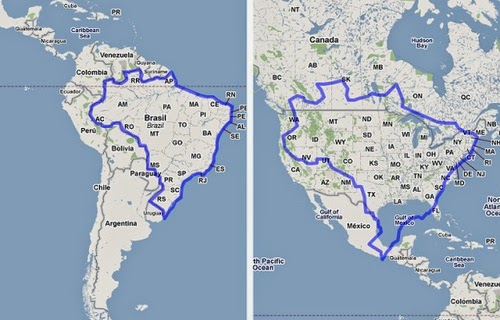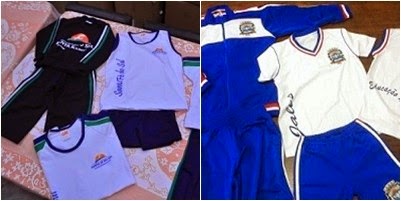In honor of the World Cup in Brazil this year, here are 100 Things to Love About Brazil: some facts, pictures, and commentary from an American living in Brazil.
In no particular order:
1. Soccer and the World Cup
Soccer is by far the most popular sport in Brazil. The national team has won 5 World Cup titles -- more than any other country. The World Cup isn't just a tournament in Brazil, it's more like a month of Superbowls. When Brazil is playing, normal life pauses. Schools let their students out, banks and stores close, and people get off from work early in order to experience the entire game with the hopes of hearing the famous cry: GOOOOOOOOOOOAL! If Brazil scores, a local series of LOUD fireworks is sure to follow. Will this be the year that Brazil adds a 6th star to its jersey?
Arguably one of the most recognizable flags in the world, the Brazilian flag's unique design and color scheme set it apart. Only 25% of national flags do not include the color red and only a few include writing.
At first glace the design could appear to be a blue soccer ball floating over a grassy field, but the green and yellow colors actually correspond to the colors of the first ruling families. The blue circle represents the night sky over Rio de Janeiro the night the flag was adopted, November 15, 1889. The 27 stars correspond to the 26 States in Brazil, plus one for the Federal District. The banner includes the words "ORDEM E PROGRESSO" in Portuguese, literally "Order and Progress."
3. The National Anthem
To listen to the Brazilian national anthem, click below:
Nothing gets you into a patriotic mood quite like this catchy beat. Must be sung with gusto.
4. The Language
Let's clear this up right off the bat, the national language of Brazil is not Spanish, but Portuguese. Although there are around 180 indigenous languages in Brazil, roughly 99.9% of Brazilians speak Portuguese. It is one of the most monolingual countries in the world, surpassing the U.S. If you travel to Brazil, be sure to learn a few words and phrases in Portuguese or you might be in trouble.
The language is a beautiful rhythmic romance language, phonetically written and easy to read once you learn the phonological rules. Stay tuned for a future post on how to pronounce Brazilian Portuguese.
5. The Currency
5. The Currency
The currency of Brazil is the Real. "Real" in Portuguese is pronounced as "hey-ALL" (sorry linguistic friends, pronunciation not written in IPA). More than one real is called reais (pronounced "hey-EYES"). Each bill is a different color and includes a unique animal on the back. In 2010, the 1 Real note was discontinued, replaced by the 1 Real coin which was already in circulation. There are also other coins in denominations of 5, 10, 25, and 50 centavos. There is no longer a one centavo coin.
For the current U.S. Dollar - Brazilian Real exchange rate, click here.
6. The Capital -- Brasília
Brasília is one of the most unique cities in the world. In the mid-50s Brazil decided to move its capital from Rio de Janeiro, a city in the Southern commercial district to a more centralized location, safer from maritime raids. Instead of developing an existing city, an entirely new location was chosen, designed, developed, and constructed in 41 months. And if you're going to design a city, why not make it look like an airplane? See it?
7. The Terrain
Covering nearly half of South America, Brazil has several types of terrain including tropical rainforest, grasslands, coastal, and savannas. It is home to the majority of the Amazon Rainforest which represents over half of the remaining tropical rainforest in the world.
8. The Natural Wonders
From the Amazon River to the breathtaking waterfalls of Foz de Iguaçu to the iconic harbor of Rio de Janeiro, Brazil is rich in natural beauty. Be sure to add visiting some of Brazil's natural wonders to your bucket list.
9. The Wildlife
Brazil is one of the most biodiverse places on earth. It ranks first for greatest number of unique species of both mammals and freshwater fish, 2nd for reptiles, and 3rd for birds. Who doesn't love to see a macaw or a toucan flying by?
10. The Culture
Brazil's rich culture comes from its ethnically diverse population. Starting with the indigenous population, the country was then settled by the Portuguese, followed by a slave trade from Africa. The country later went on to receive immigrants from Europe and other parts of the world. It's no wonder that Brazil is a melting pot of different cultures and peoples. An interesting example of this is that it is not completely uncommon to find individuals with dark skin and blue eyes. From the world famous Carnaval to the Indigenous Kuarup festival, Brazil has a little bit of everything.

























































